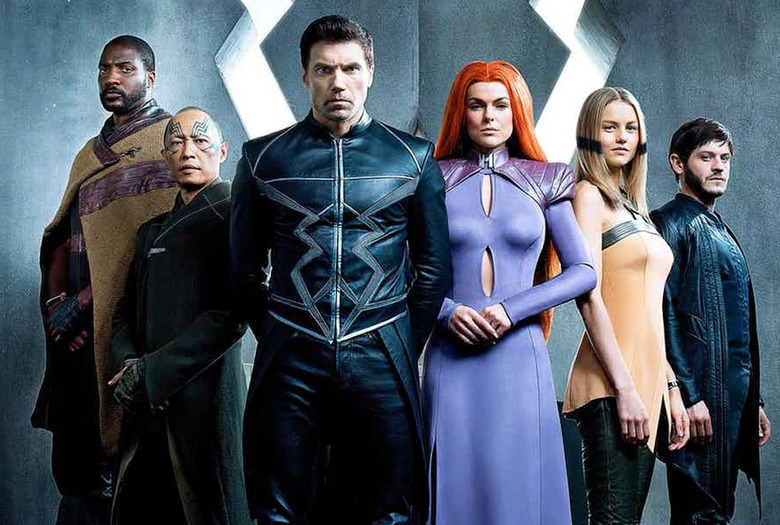How Marvel's Inhumans Became A Radioactive Property In The MCU (Exclusive Book Excerpt)
We may receive a commission on purchases made from links.
So poorly conceived (and in turn received) was Marvel's Inhumans, the Royal Family at the heart of the ABC TV series became persona non grata in the greater Marvel Cinematic Universe.
Out today, the book MCU: The Reign of Marvel Studios (by Joanna Robinson, Dave Gonzales and Gavin Edwards; shop Amazon) delivers a super amount of detail on the origin and evolution of the Marvel Cinematic Universe — from almost-castings to backstage beefs to the myriad difficult decisions made every step of the way. And while MCU focuses largely on the films that comprise the titular cinematic universe, it also unearths a ton of information about the live-action TV series that came and went over the years — on ABC, Netflix, Hulu, Freeform, FX and now Disney+.
Inhumans starred Anson Mount (then of Hell on Wheels fame) as Black Bolt, king of the Royal Family of Attilan, a city situated inside a crater on Earth's moon. A society of people whose individual powers were awakened by terrigen crystals, the Inhumans peacefully resided in Attilan until the emergence of the occasional Inhuman on Earth roused a debate. Black Bolt believed that Earth's Inhumans could be located and invited to Attilan, while his brother Maximus (Game of Thrones' Iwan Rheon) vehemently believed the opposite, that it was time for all Inhumans to relocate to — and take over? — Earth. The cast also included Serinda Swan (Graceland) as the Royal Family's queen, Medusa, Isabelle Cornish as Crystal, a princess, and Ken Leung (Lost) and Eme Ikwuakor as the "visionary" Karnak and guardian Gorgon.
Two weeks ahead of its September 2017 ABC debut, a 75-minute edit of Inhumans' double-episode premiere bowed on IMAX screens and mustered just $1.1 million in its opening weekend. The series' ABC premiere drew 3.8 million viewers (and a TVLine reader grade of "C-"), though the eight-episode run would average just 2.6 mil. The following May, the Marvel series was unceremoniously cancelled.
Thing is, the Inhumans were originally intended to make their live-action debut in a feature film that was penciled in to hit theaters in July 2019 and close out Phase 3 of the MCU. Said film, though, wound up being quietly dropped from Marvel Studios' slate; months later, the Inhumans TV series was announced.
TVLine's exclusive excerpt from the "Remote Control" chapter of MCU: The Reign of Marvel Studios, below, picks up not long after Marvel regained the rights to Daredevil, Blade, Ghost Rider, Luke Cage and other comic book characters. Marvel's Creative Committee — a board of comic book writers who gave periodic feedback on every Marvel Studios production — decided that Marvel Studios chief Kevin Feige was sufficiently busy overseeing the Avengers' big-screen exploits, so these "wayward characters" were handed over to Jeph Loeb's Marvel Television arm.
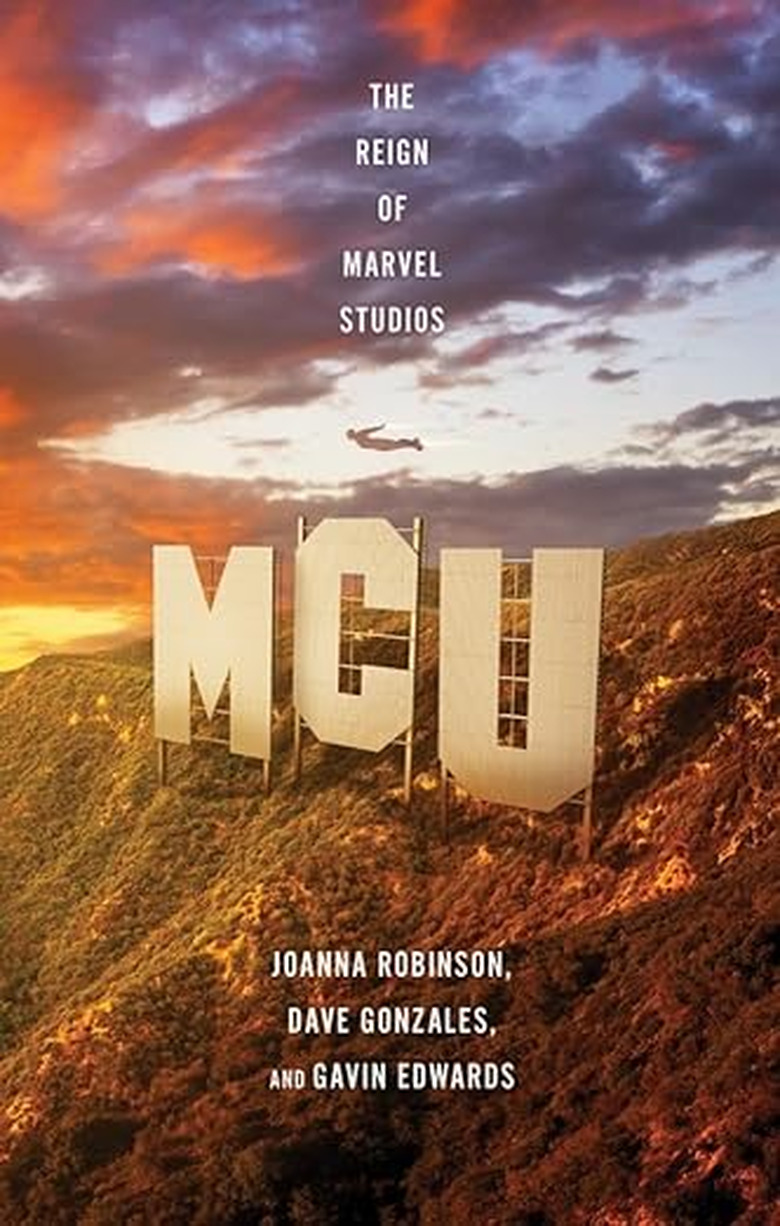
EXCLUSIVE EXCERPT FROM MCU: THE REIGN OF MARVEL STUDIOS
Not every wayward character had returned to Marvel. Fox had greenlit Josh Trank's Fantastic Four movie, but then took the troubled project away from the director, shooting new sequences and reediting the film, resulting in an utter mess. (The patchwork movie was released in 2015, around the same time Marvel started airing its Netflix shows.) The studio did better with the X-Men franchise, however, rolling out spinoffs and prequels and crossovers, including hits such as X-Men: Days of Future Past and Deadpool.
Marvel Entertainment (meaning CEO Ike Perlmutter and president/Creative Committee chair Alan Fine) deeply resented that Fox retained the rights to those properties. Fantastic Four, the book that launched Marvel Comics, had been the company's flagship title since 1962 — but in 2014, it ceased publication rather than give free publicity to a Fox movie. Similarly, although X-Men comics had long been among Marvel's most popular books, the company suddenly did everything it could to deemphasize its mutant characters and de facto replace them with the similarly enhanced Inhumans. That royal family of a superpowered race living outside of human society had been supporting characters in Marvel comics since 1965, but a 2013 plotline increased their prominence by turning unsuspecting human beings into Inhumans (with the "Terrigen Mists").
"That has everything to do with the fact that the film rights are controlled by a rival corporation," longtime X-Men writer Chris Claremont said at New York Comic Con in 2016. "The corporate publishing attitude is 'Why would we go out of our way to promote a title that will benefit a rival corporation's films when we could take that same energy and enthusiasm and focus and do it for our own properties?' Hence the rise of the Inhumans as the new equivalent of the mutants. I could wish for something else, but it ain't my $5 billion."
Marvel Studios had been developing an Inhumans movie for years, but Feige was never satisfied with the script and wasn't eager to do battle with Fox on Perlmutter's behalf. (One proxy fight, against Marvel Television as the cat's-paw of the Creative Committee, was enough for him.) As soon as Feige pulled the Inhumans movie from the release schedule (in April 2016), Marvel Entertainment ordered Loeb to fast-track Inhumans content on TV. Just two months later, the Inhumans appeared on Agents of S.H.I.E.L.D.
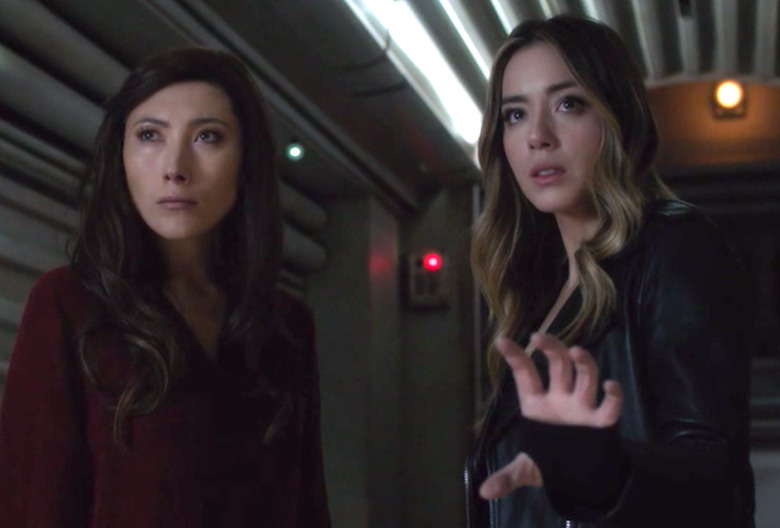
Marvel Television immediately began work on an Inhumans television series, and by November 2016, ABC had committed to airing an eight-episode season with IMAX as a production partner. That meant that the first two episodes of Inhumans were filmed in the IMAX format and aired on IMAX screens in September 2017. The embarrassing reviews were matched by the dismal box office, and theater owners pulled the Inhumans episodes in favor of the IMAX version of It as quickly as possible.
The show didn't do any better on the small screen. Because of budgetary constraints, many of the Inhumans were swiftly depowered. Medusa, the Inhuman queen, had her prehensile red hair — expensive to render in CGI — shaved off her head. The teleporting dog Lockjaw had to be grievously wounded so most of the action could stay in a single location (the show filmed on the Hawaiian island of Oahu). The series was quickly cancelled. One of the stars quipped, "At least I got a trip to Hawaii out of it."
How determined was Marvel Studios to minimize any connection with Marvel Television? When it developed a movie starring another obscure superteam, the Eternals, the creators were instructed that none of it could take place in Hawaii. The studio didn't want any risk that audiences might be reminded of the Inhumans.
Excerpted from MCU: The Reign of Marvel Studios by Joanna Robinson, Dave Gonzales, and Gavin Edwards. Copyright © 2024 by On Your Left, LLC. Used with permission of the publisher, Liveright Publishing Corporation a division of W. W. Norton & Company, Inc. All rights reserved.
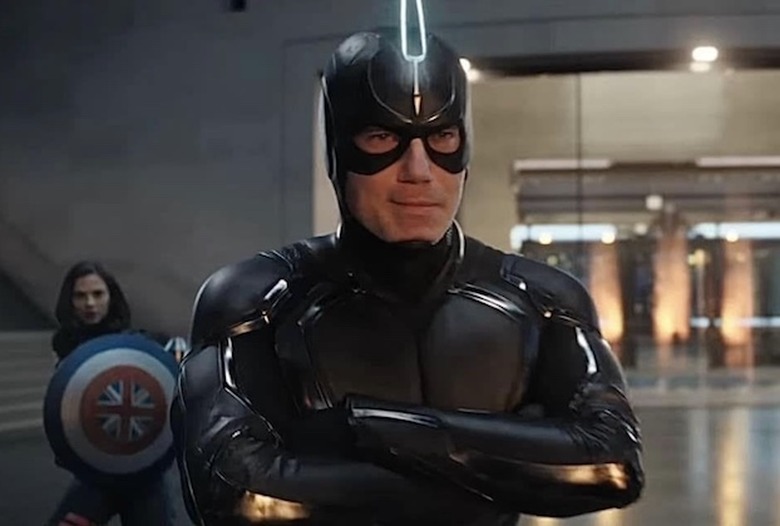
Eternals instead filmed in the Canary Islands, other locations in Spain, London, England and elsewhere — but not the Aloha State. Interestingly, Anson Mount would reprise his role as an alternate version of Black Bolt in the 2022 MCU film Doctor Strange in the Multiverse of Madness, comics-accurate costume and all.
Two weeks after that blockbuster's release, Mount addressed his cameo, writing on Twitter that the call he received from Marvel Studios chief Kevin Feige "was one of the most unexpected of my life," adding: "It was an honor and joy to finally work w/ [director] Sam Raime [sic] who reached out to engage me on how best to do this. Beyond grateful for the experience."
MCU: The Reign of Marvel Studios
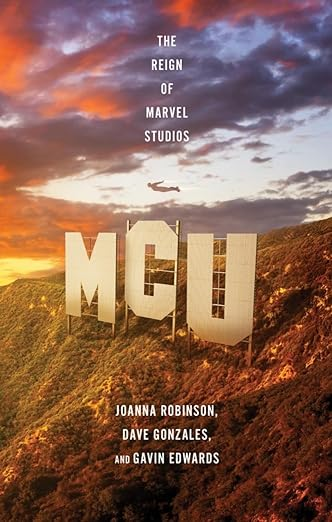
(If you buy something through our retail links, TVLine may earn a commission.)
